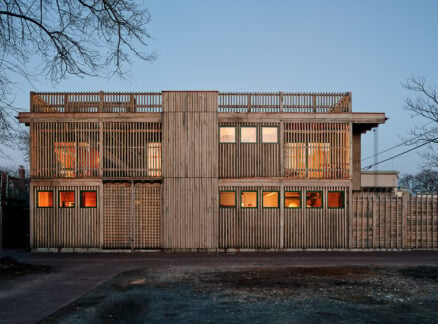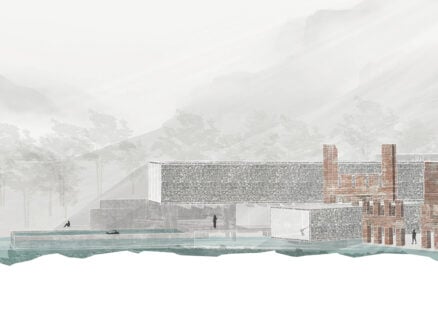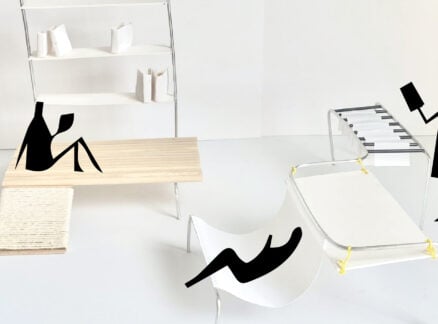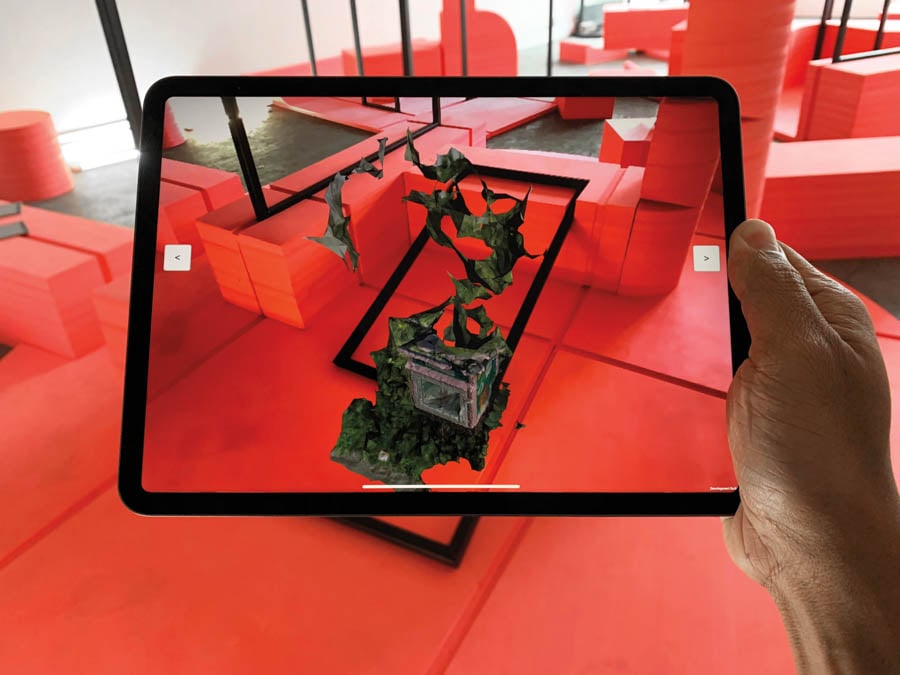
February 18, 2020
New Talent: EXTENTS Expertly Weaves the Digital and the Physical
Through installations, conferences, and teaching, the Michigan-based studio engages critically with technology.

It should not be much of a surprise that the two digital natives behind the architecture studio EXTENTS would embrace an aesthetic to match. Bearing monikers that mimic metadata naming conventions, the studio’s several storefront exhibitions and immersive environments seem designed to be primarily experienced on smartphones. It follows, then, that the saturation and wild bioluminescent hues—deep-sea blues, reds that burn with the intensity of West Coast sunsets—evident in projects like Lossy/Lossless, staged in 2019, are calculated to cause a break in the feed.
EXTENTS isn’t shy about the mediatic aspect of its work. As McLain Clutter, one of its founders, explains, “The circulation of images through digital culture has habituated the public to certain modes of understanding images.” Our behaviors have fundamentally changed as a result; we swipe—and double-tap and scan—an average of four hours per day, or more than a full day each week.
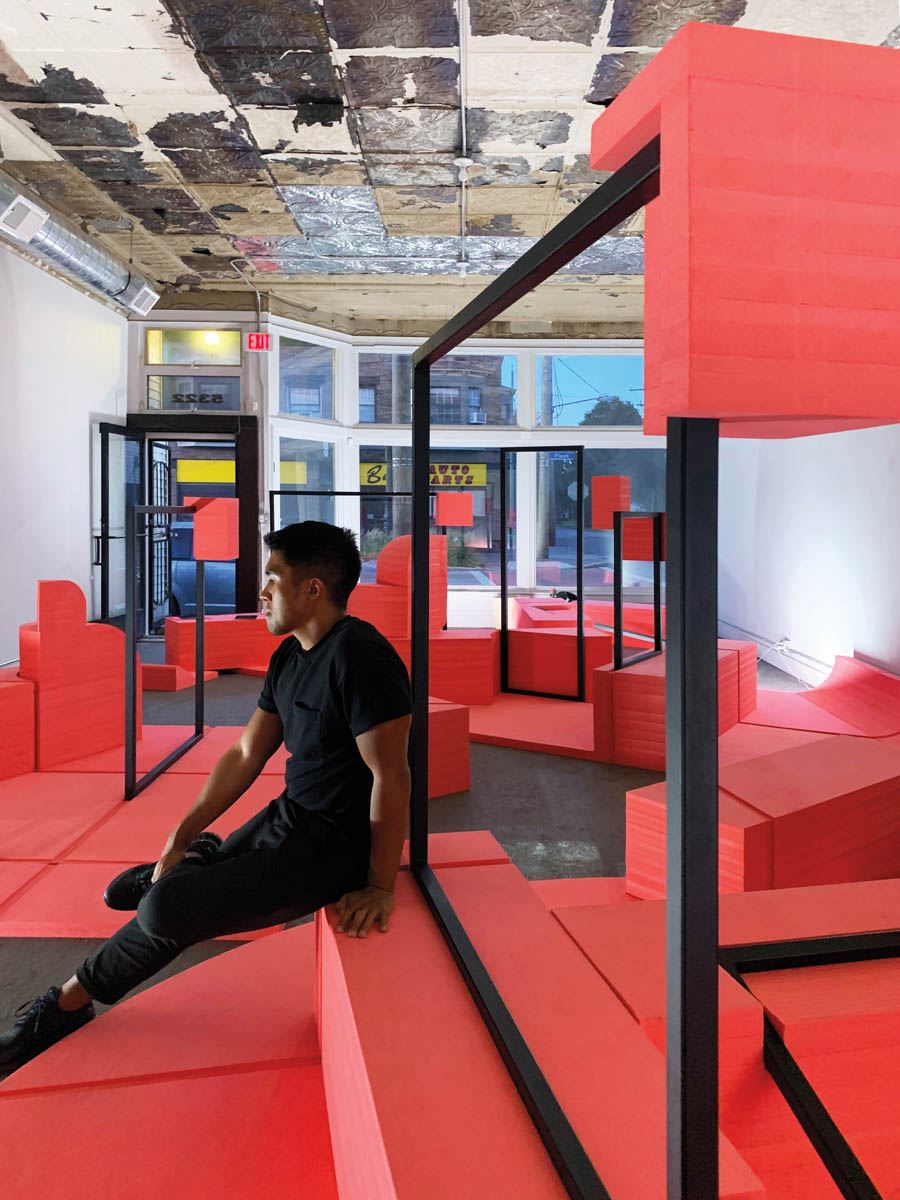
Clutter, who has degrees in architecture from Syracuse University and in environmental design from Yale, started the venture with Cyrus Peñarroyo three years ago in Ann Arbor, Michigan. Their paths crossed while teaching at the University of Michigan Taubman College of Architecture & Urban Planning, where they remain today. (Clutter was recently appointed the school’s chair.) Peñarroyo studied architecture at the University of Illinois at Chicago and went to Princeton for grad school, then spent several years in New York City working at LTL Architects.
Last summer, Peñarroyo received The Architectural League Prize, which granted him the opportunity to mount an installation at the Parsons School of Design Sheila C. Johnson Design Center. The topsy-turvy display was an excellent summary of EXTENTS’s work: Foam-padded platforms fabricated in a single block of color (lavender on this occasion), flat-screen computer monitors, and protruding coils of extension cords accentuated a mixed-media exhibit that made no effort to hide itself behind a naturalistic, or immaculately resolved, shell. Rather, Peñarroyo and Clutter aimed to expose and extrude the guts of the image-making mechanisms themselves.
Such was the impetus for Becoming Digital, an exhibition and conference co-organized by Clutter that launched at Taubman in early 2018. The opening conclave kicked off with a splashy presentation by the artist/theorist Hito Steyerl, but largely limited itself to questioning the role of the visual within the twin spheres of architectural design and culture. Nevertheless, in a written statement the organizers raised the category of “the digital” almost to the level of ontology; as they themselves put it, “everything from screen to stone exists as data and matter.” Peñarroyo designed an exhibition environment—a field of LCD screens, improvised foam seating, gently throbbing 2D graphics, and pulsating light projections—that seemed to literalize this conviction.
EXTENTS’s preoccupations could be construed as academic ones (“We crib a lot from digital studies and media theory,” Clutter admits), but the duo are also keen on bringing their critical apparatus to bear on everyday life. The Lossy/Lossless installation played off the social disjuncture of a demographically changing neighborhood (here, Echo Park in Los Angeles), while the unbuilt House_UU proposed new domestic arrangements for queer couples. Peñarroyo identifies the latter project as an attempt to reveal the biases latent in residential design: “The kinds of people that are imagined to live in conventional houses reinforce certain ideas about heteronormativity and domestic space.”
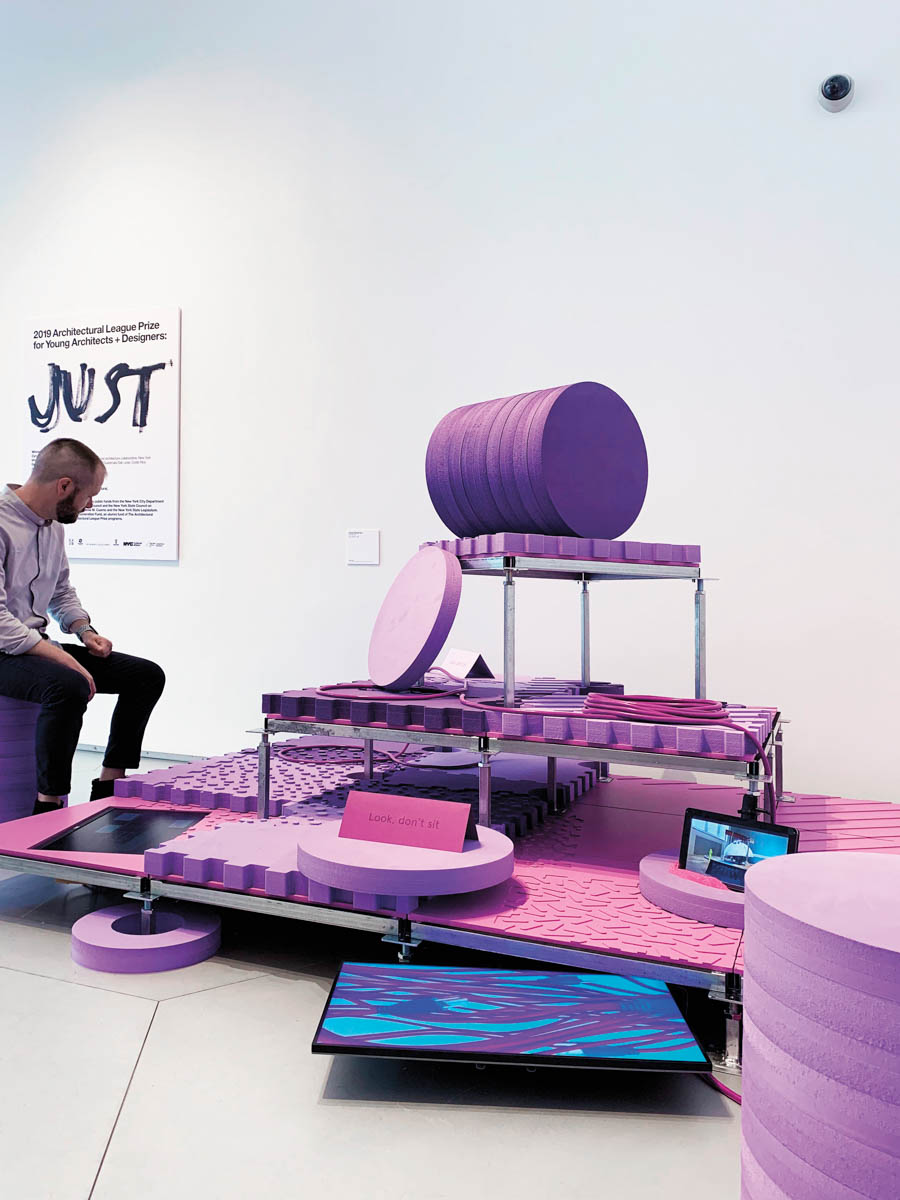
Like the other projects found in EXTENTS’s portfolio (or on its cacophonous website), House_UU puts forward a model in which architecture takes its lead from the digital. Similarly, Collective Reality: Image without Ownership, staged inside a Slavic Village, Cleveland, storefront this past August, foregrounded AR technology and cast the recumbent installation—another saturated EXTENTS number—in a background role. Wielding tablets, visitors conjured up local landmarks, node markers, and urban ephemera within the space of the gallery, thereby participating in the work itself. The resulting bricolage celebrated the patina of the neighborhood, which is bracing for gentrification, but did so only in the most fleeting manner. As the exhibition title suggested, the neighborhood’s identity could not be leased or owned.
In this way, EXTENTS’s engagement with the digital remains critical; indeed, the duo admit the ambiguity at its core. On the one hand, it has an unrivaled capacity to accommodate, make visible, and proliferate difference, while on the other, it has yet to make good on its promise of carving out truly liberating space. Perhaps it never can; after all, the digital is subject to the same economic imperatives that govern physical construction. As Clutter suggests, the virtual realm is just “another place,” another medium in which “common understanding is forged or common understanding is completely ruptured and divided.”
You may also enjoy “New Talent: the Architect Lluís Alexandre Casanovas Blanco Knows How to Infuse Space With Narrative.”
Would you like to comment on this article? Send your thoughts to: [email protected]







